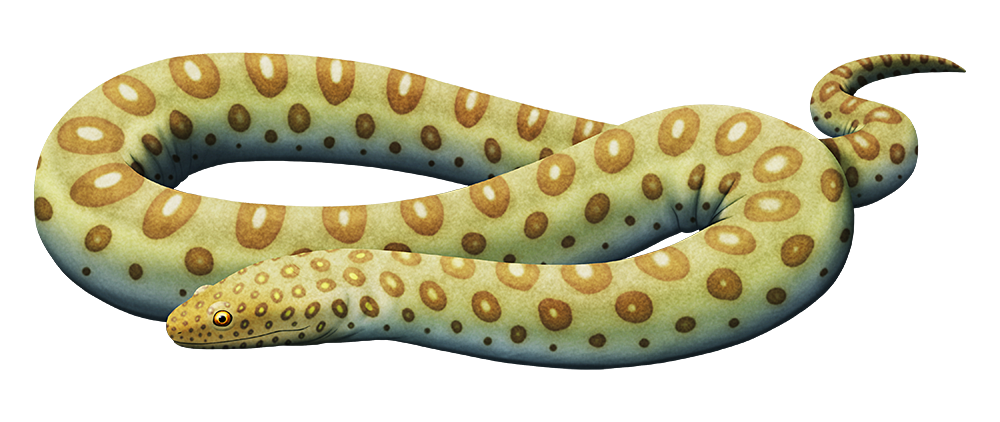Ever since the earliest tetrapods crawled onto land and developed limbs and digits, some lineages have just… decided the whole “legs” thing was overrated and lost them entirely.
And the earliest known group to do this were the aïstopods. These highly elongated amphibian-like animals had specialized lightly-built skulls with large jaw muscles, and they may have filled a similar ecological niche to modern snakes, hunting small terrestrial invertebrates.
Lethiscus stocki was one of the first members of this snake-like group, living in Scotland during the Early Carboniferous about 340 million years ago. Growing to at least 50cm long (~20″), it was already a very specialized animal despite its basal position among the aïstopods, with eyes set far forward on its face and no trace of vestigial limbs.
CT scans of its skull have shown some surprisingly fish-like anatomy, especially in its braincase, features that were lost very early in tetrapod evolution. This suggests that aïstopods weren’t part of the lepospondyl amphibians like previously thought, but actually originated much much earlier in the tetrapod evolutionary tree – potentially placing them somewhere among the “fishapods” between Ichthyostega and Crassigyrinus.

